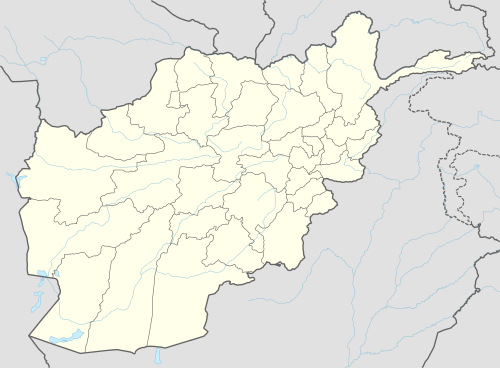Haji Piyada
| Persian: آرامگاه حاجى پياده بابا | |
 Shown within Afghanistan | |
| Location | near Balkh, Balkh Province |
|---|---|
| Coordinates | 36°43′47.1″N 66°53′7.1″E / 36.729750°N 66.885306°E |
| Type | ruin |
Haji Piyada Mosque ḤĀJI PIĀDA or Noh Gonbad Mosque (Persian: مسجد نُهگنبد "Mosque of Nine Cupolas"), a Samanid-style building in Balkh province of northern Afghanistan. Built in the 9th century, it is thought to be the earliest Islamic building in the country.[1][2]
The site was listed on the World Monuments Fund's 2006 World Monuments Watch list of 100 Most Endangered Sites.[3]
Tomb
The tomb measures 20×20 meters. The outside walls are of mud-brick construction. The interior is divided into nine bays, each originally covered by a dome. The columns and the arches that divide the bays are decorated in deeply carved stucco, depicting a wide variety of designs, stylistically comparable to Abbasid decoration in Mesopotamia.[4]
References
- ↑ City of Balkh (antique Bactria), UNESCO website
- ↑ Centre, UNESCO World Heritage. "City of Balkh (antique Bactria) - UNESCO World Heritage Centre".
- ↑ World Monuments Fund's World Monuments Watch 1996-2006. – Retrieved on 12 November 2008.
- ↑ Archaeological gazetteer of Afghanistan (Title in French: Catalogue des sites archeologiques d'Afghanistan), Warwick Ball, Volume I & II, Editions Recherche sur les civilisations, Paris, 1982.
This article is issued from
Wikipedia.
The text is licensed under Creative Commons - Attribution - Sharealike.
Additional terms may apply for the media files.

